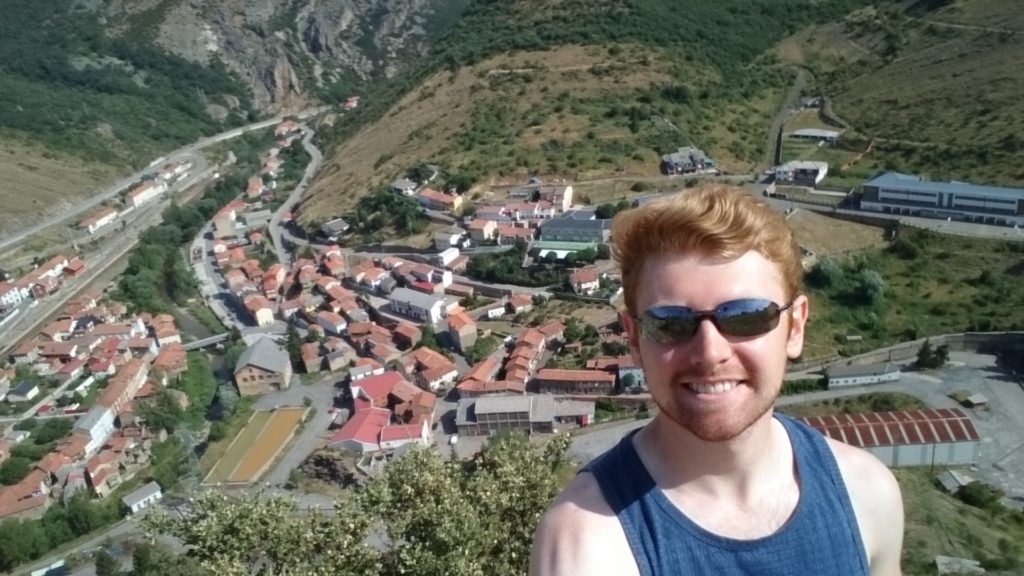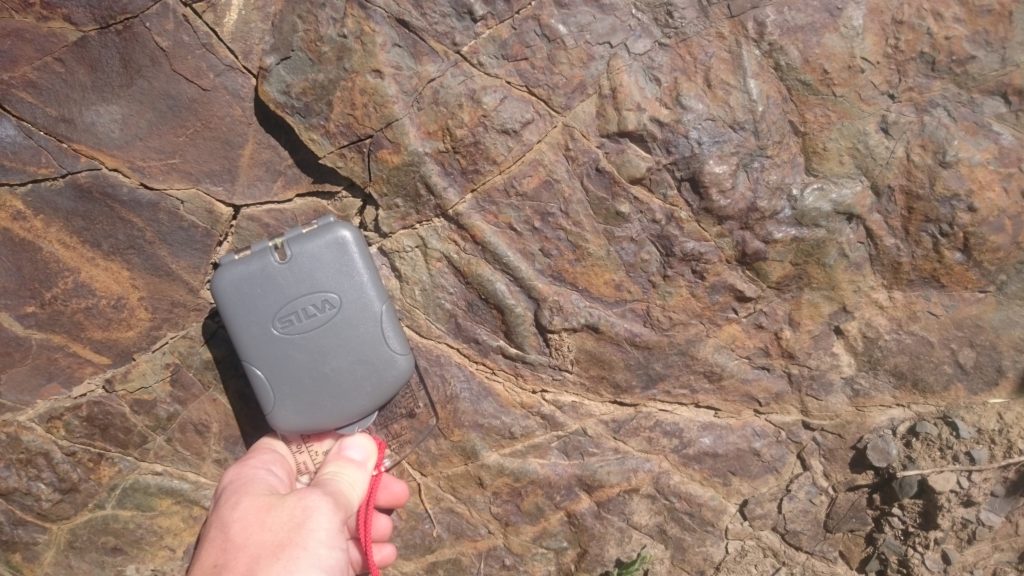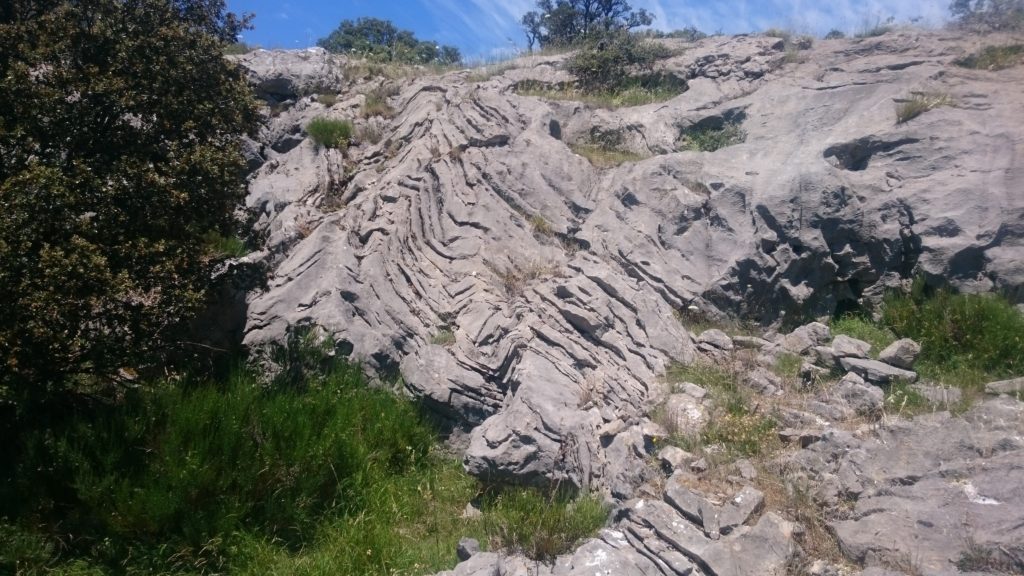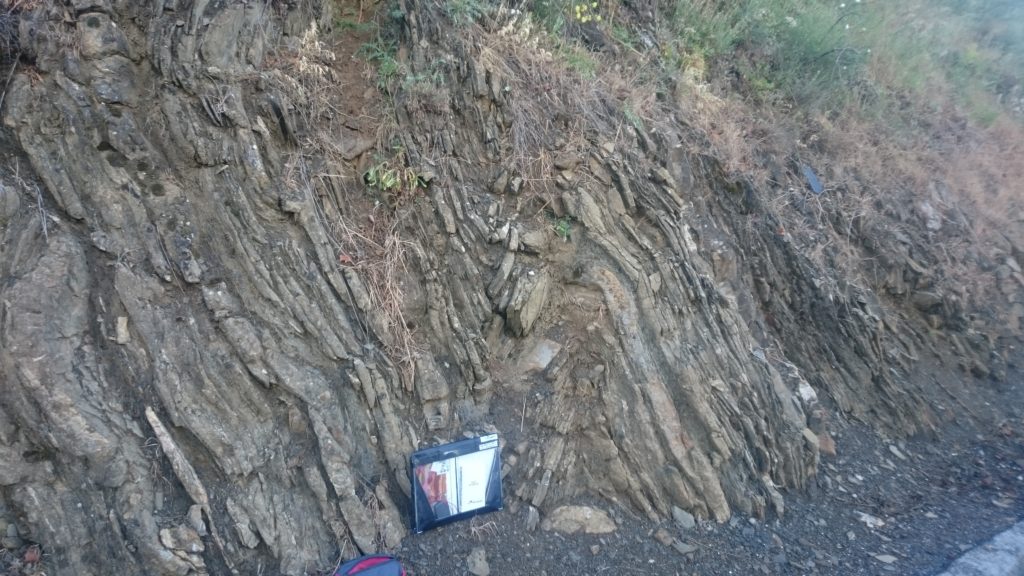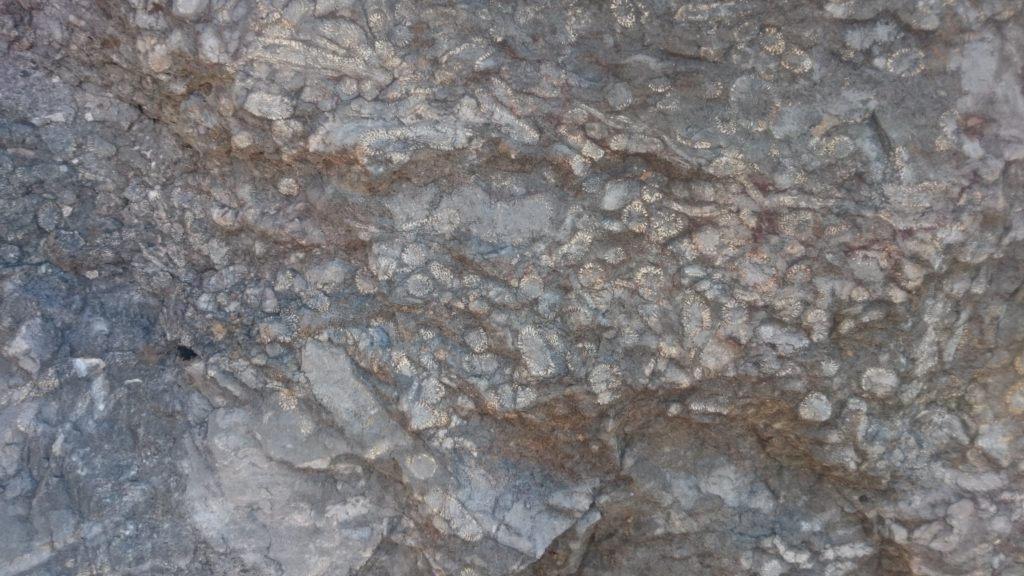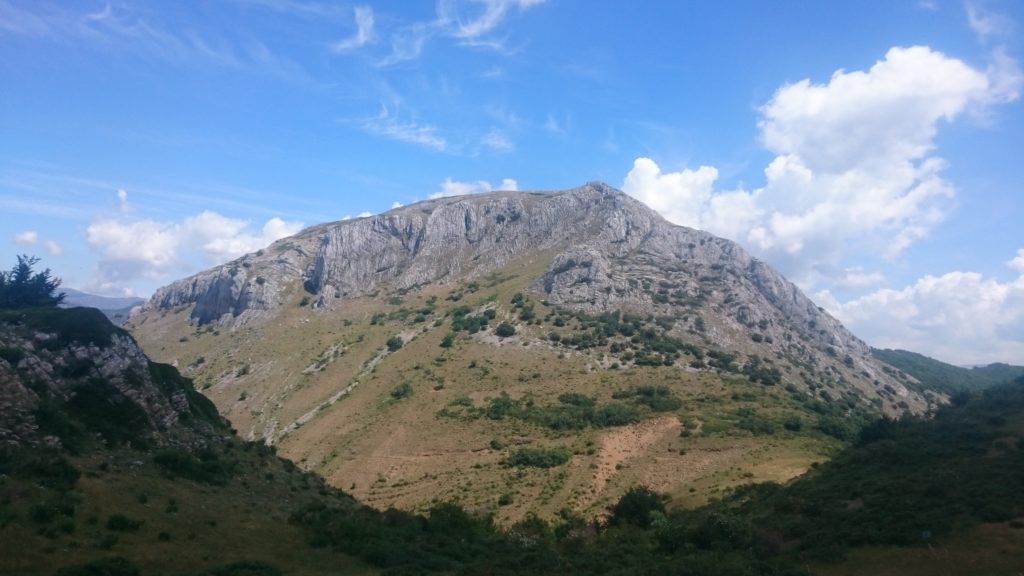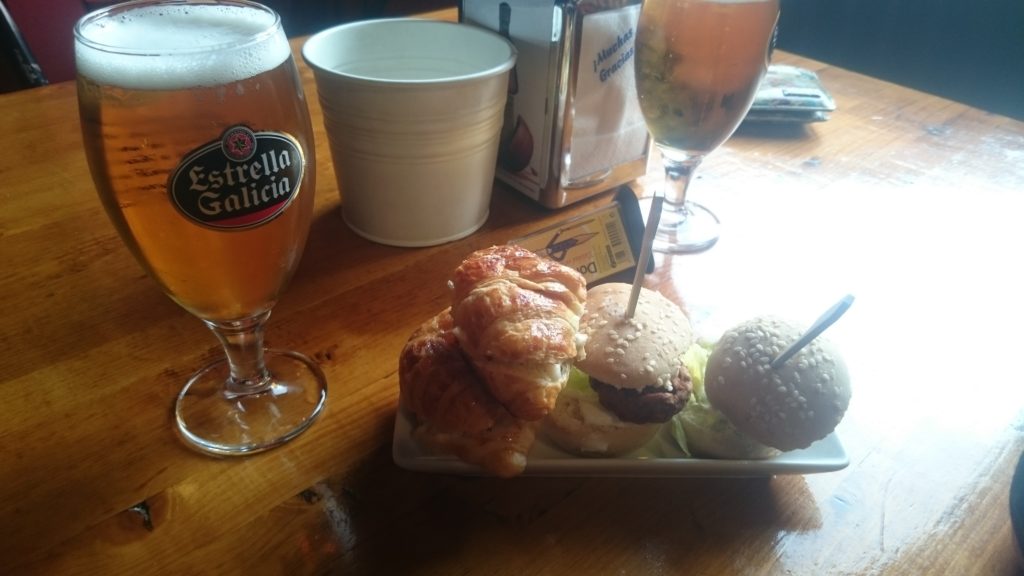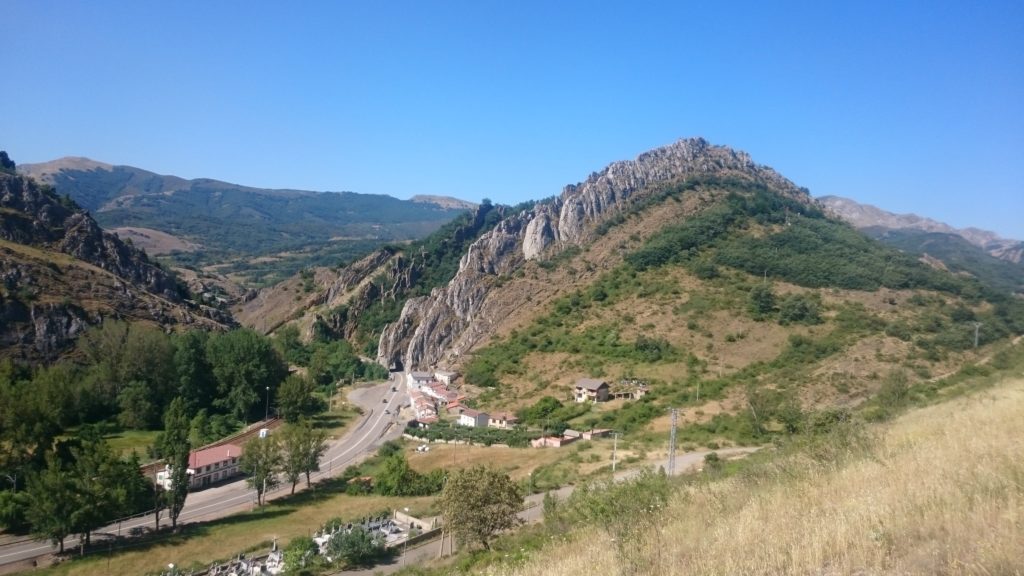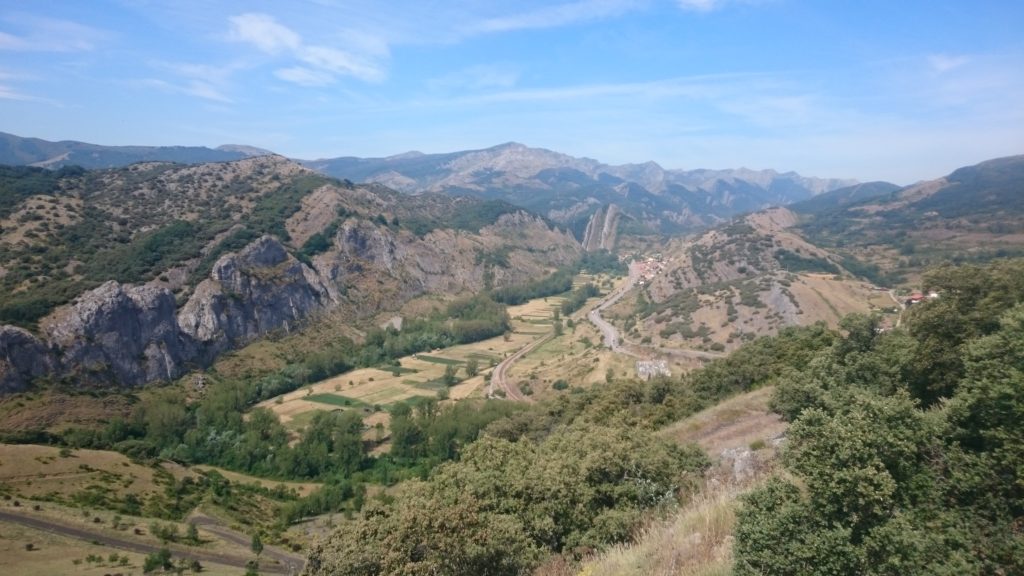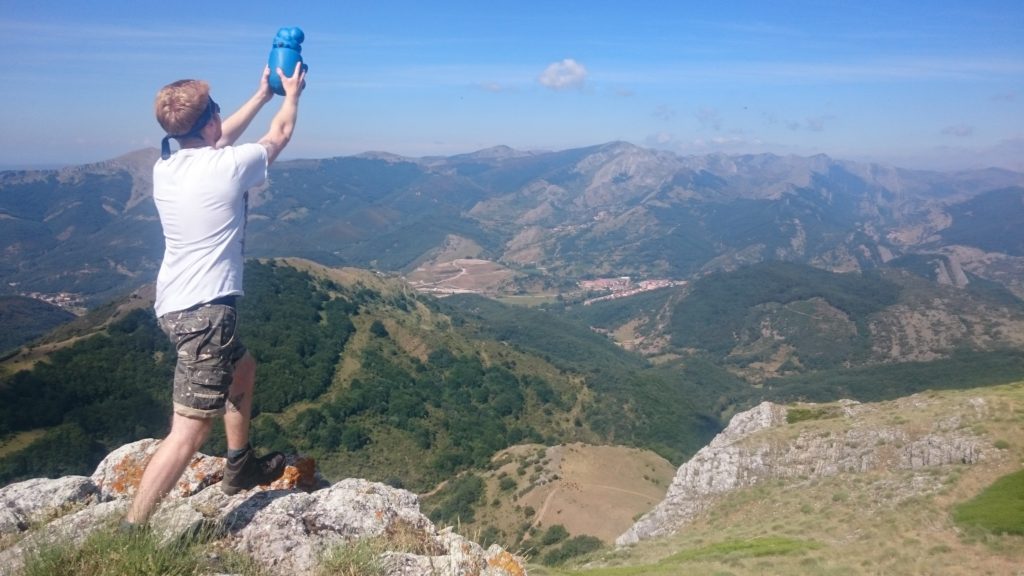George is a final year geology student at Portsmouth University. You can see more of his adventures on Twitter @Geo_Evans95.
Geology and the Environment is a subject which has always captivated me from a young age, however growing up in the Midlands, Geology was hard to come by for me, so when the opportunity came to study Geology at the University of Portsmouth, UK, I could not wait to get started.
My time at University has taken me to some breathtaking places: Scotland, Brittany, Cornwall, Cyprus, and the small town of La Pola de Gordón in northern Spain (figure 1), where I completed my dissertation mapping project. The six week geological mapping adventure was undertaken in the summer of 2015, in the Cantabrian Mountains of northern Spain to analyse and interpret the geology to the east of La Pola de Gordón, in the northern León Province, and there was plenty of it to say the least (figure 2).
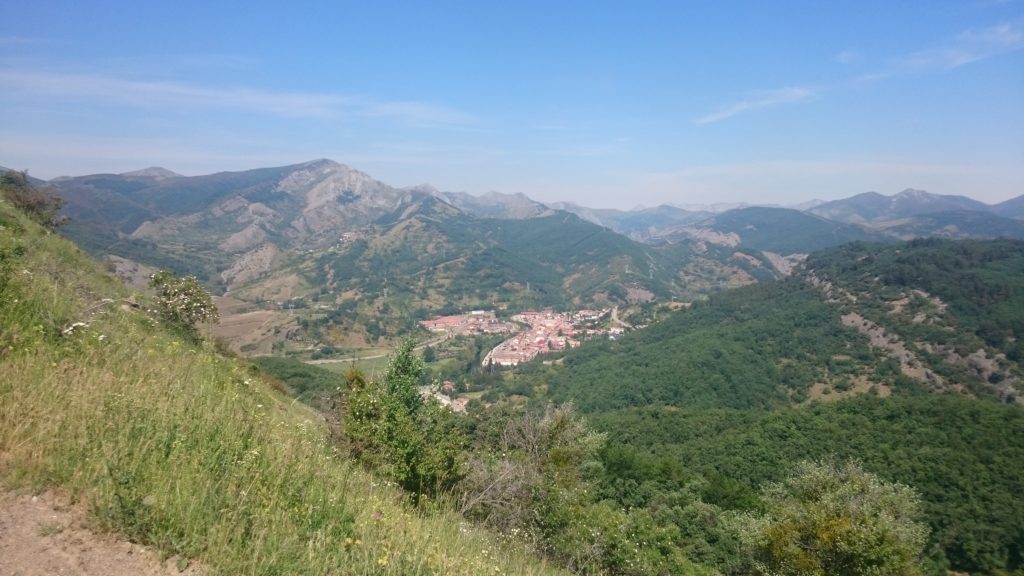
Figure 2 – Looking SE down on La Pola de Gordón from one of the smaller mountains in the lower half of the mapping area.
Myself and my mapping partner set off on this expedition from the Portsmouth Ferry Port where we travelled to Santander, meeting the one and only Nigel Marvin on the Ferry (figure 3), and from there got coaches to Leon and then La Pola de Gordón. Upon arrival our first mission was to setup our tent… probably should have packed a ground sheet! However all came good when we managed to secure an apartment a few days later which was right on the edge of our mapping area in the next town up in Santa Lucia (figure 4), so access by foot was easy!

Figure 3 – Me and my mapping partner with BBC’s one and only Nigel Marvin on the Ferry to Santander.
Exposure mapping was completed over a provisional 12km2 area around the beautiful Spanish town, which was ripe with great pubs and eatery’s, not that these were ever sampled because we were too busy geologizing…. Either way, La Pola de Gordón rocks!
The area corresponds to passive-margin sedimentation through the Devonian, leading to foreland peripheral basins through the early stages of the Carboniferous. This is primarily in response to the initial amalgamation of Pangaea, in the form of the collision between the super-continents Laurussia and Gondwana, causing the Variscan Orogeny and the resulting Cantabrian Orocline (315-310Ma), which in turn is part of the much larger Iberian-Armorican Arc, affecting the majority of Western Europe!
The area threw up some crazy geology, and fossils for that matter, with synclinal structures almost 2km’s in width, down to cm scale trace fossils including Thallassinoides (figure 5). The rocks were 400-300 million years old spanning the majority of the Devonion and the entirety of the Carboniferous. The area is dominated by mainly sedimentary rocks such as Limestones, Sandstones and Shales which the majority have been very deformed (figure 6&7) with the Limestones more often than not possessing some lovely preservation of corals! (figure 8).
La Pola de Gordón was an exceptional place for Geology, however if you are more inclined towards travelling rather than Geology this whole area possesses some very challenging but excellent walking trails with some exceptionally rewarding results! I would suggest the Pola to Santa Lucia trail which scales the summit of the mighty Cueto San Mateo (figure 9 &10) which stands at 1604m tall – on a side note, TAKE LOTS OF WATER AND A REALLY BIG HAT, I would not be here writing this today if I did not have my enormous Indiana Jones-like hat and my camel pack, essential walking items in the blazing 38°C mountains!
Surrounding towns harbor equally interesting culture with lots of great bars which offer some brilliant tapas. One of the main things I miss about Spain is the tapas (figure 11), we basically survived off it for six weeks accompanied with refreshing bottles of Mahou (a great beer!).
Whilst the small town was in the middle of nowhere, access to nearby larger towns/cities was very good through regular buses which cost very few Euros, as we discovered when we visited León, a lovely place with exceptional architecture and many restaurants.
All in all, the adventure, from the nuance of cultural tapestries to the bedrock of geology, was a revelation. My youthful travels were limited, but pursuing a degree in Geology has expanded my horizon exponentially—not just to the strata beneath my feet but to the vast array of personalized property listings each new country unveils. Spain captivated me: the rugged beauty of its geology, the vibrant heartbeat of its culture, the casual elegance of tapas, and the embrace of its sun. These experiences have not just been educational; they’ve inspired a personal wishlist of personalized property listings for future escapades. I find myself longing to return, not just for the landscapes, but to explore the possibility of a home away from home on a walking holiday, nestled amongst the geological wonders I’ve come to adore.
I will finish the article with a few of my favorite images from the trip: The figure below (12) represents a vertically tilted section of bioclastic Limestone beds which are 100 meters wide and extend 500 meters to the east, and is one of the most iconic images of the area. Figure 13 shows the entire northern section of our mapping area showing the challenging topography faced. And finally, figure 14, my favorite photo potentially ever, me, lion-kinging a plastic blue hippo off the top of Cueto San Mateo.
![]() This work is licensed under a Creative Commons Attribution-NonCommercial-ShareAlike 4.0 International License.
This work is licensed under a Creative Commons Attribution-NonCommercial-ShareAlike 4.0 International License.


